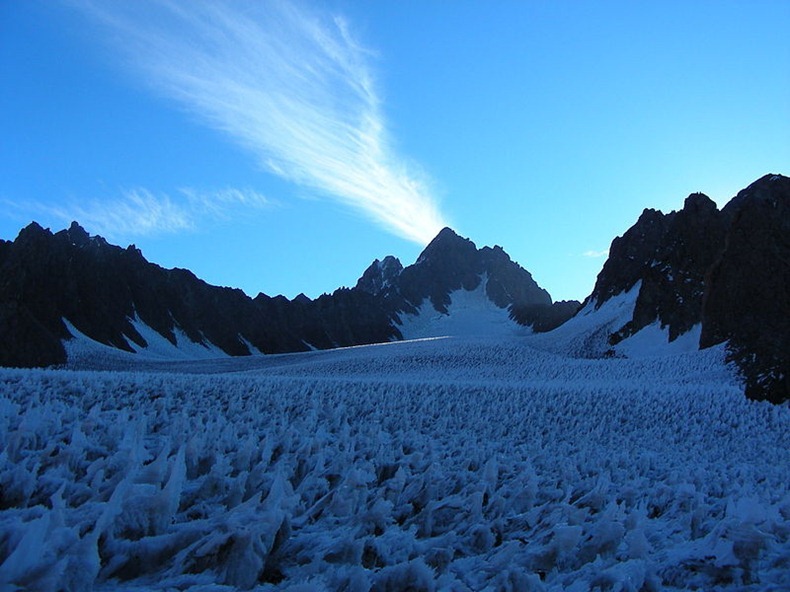Penitentes were first described in the literature by Darwin in 1839. On March 22, 1835, he had to squeeze his way through snowfields covered in penitentes near the Piuquenes Pass, on the way from Santiago de Chile to the Argentinian city of Mendoza, and reported the local belief that they were formed by the strong winds of the Andes.

Snow penitents can be hell if you have to cross them.
In reality, wind has nothing to do with Penitentes. They form when the sun’s rays turn snow directly into water vapor without melting it first, a process called sublimation. An initially smooth snow surface first develops depressions as some regions randomly sublimate faster than others. The curved surfaces then concentrate sunlight and speed up sublimation in the depressions, leaving the higher points behind as forests of towering spikes. At the micro-scale, similar-looking spikes help solar cell surfaces maximize their sunlight absorption.
Recently scientists have argued that the presence of carbon or any other impurities lead to some absorption of sunlight and the resultant occurrence of Penitentes. If this theory is to be believed, then the glaciers could be saved from the onslaught of global warming. There are counter arguments to this claim that if the Penitentes absorb more sunlight due to the presence of carbon, they may also result in the destruction of the icebergs. Studies are being pursued in this field to discover the effect of global warming on the formation of Penitentes.











Source
